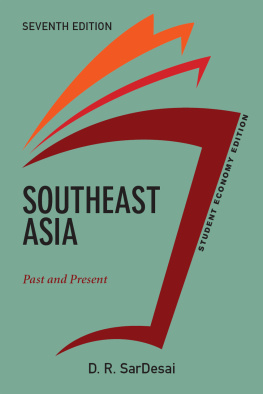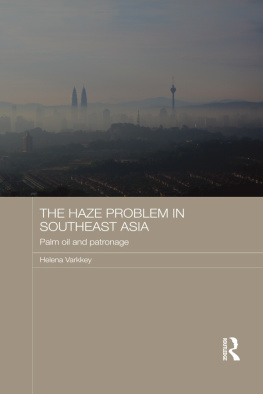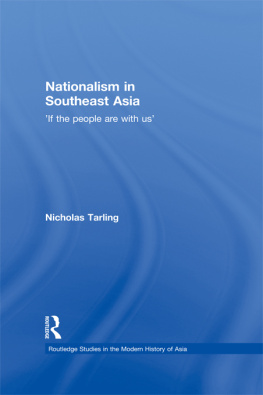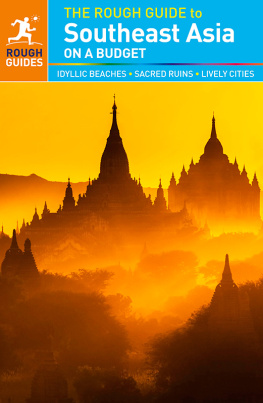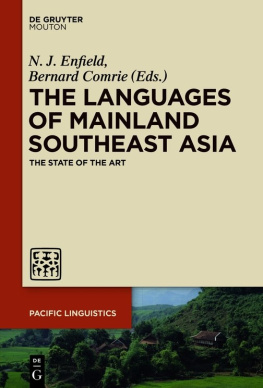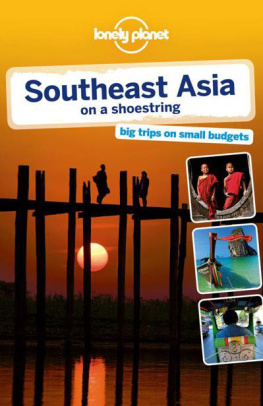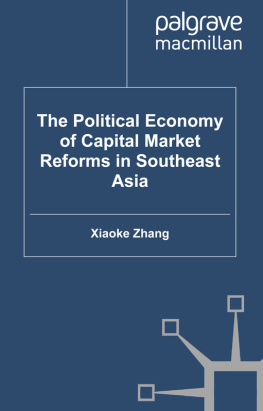First published 2016 by Westview Press
Published 2018 by Routledge
711 Third Avenue, New York, NY 10017, USA
2 Park Square, Milton Park, Abingdon, Oxon OX14 4RN
Routledge is an imprint of the Taylor & Francis Group, an informa business
Copyright 2016 by Taylor & Francis
All rights reserved. No part of this book may be reprinted or reproduced or utilised in any form or by any electronic, mechanical, or other means, now known or hereafter invented, including photocopying and recording, or in any information storage or retrieval system, without permission in writing from the publishers.
Notice:
Product or corporate names may be trademarks or registered trademarks, and are used only for identification and explanation without intent to infringe.
Every effort has been made to secure required permissions for all text, images, maps, and other art reprinted in this volume.
Typeset in 10.5 point Adobe Garamond Pro by the Perseus Books Group
Library of Congress Cataloging-in-Publication Data
SarDesai, D. R.
Southeast Asia : past and present / D.R. SarDesai.7th ed.
p. cm.
Includes bibliographical references and index.
ISBN 978-0-8133-4837-7 (pbk. : alk. paper)ISBN 978-0-8133-4838-4 (e-book) 1. Southeast AsiaHistory. I. Title.
DS525.S27 2013
959dc23
2012035776
ISBN 13: 978-0-8133-5016-5 (pbk)
Most general historians of Southeast Asia, with the notable exceptions of D. G. E. Hall, Georges Coedes, and John F. Cady, have given an undue emphasis to the period of European rule. They have consequently treated the pre-European period merely as a prologue to the understanding of colonial rule. Such a treatment, condemned first by the Dutch scholar J. C. van Leur as providing a Eurocentric view regarding Indonesian history, for example, from the deck of the ship, the ramparts of the fortress, the high gallery of the trading house, is unacceptable to most contemporary historians. On the other hand, the Indian historian-diplomat K. M. Panikkar, a well-known partisan of the Asiacentric viewpoint, has conceded that, qualitatively speaking, the changes brought by Western rule could only be described as revolutionary. There is no denying that most of the present-day economic, communications, and educational patterns of the regions independent states owe much to the colonial period. Therefore, while focusing on the activities of the indigenous people, I have felt compelled to treat the colonial period as more than an interlude. A fairly large section of the book consequently is concerned with Western activity in the region and the indigenous reaction to it.
This book is the product of four decades of teaching courses in Southeast Asian history and separately on Vietnam, at the University of California, Los Angeles. I appreciate the contribution of many a bright student who raised questions or offered comments during innumerable discussions in and out of the classroom. These have helped immensely in clarifying my ideas on a wide range of historical problems concerning Southeast Asia. I am also thankful to the many scholars whose monographs, translations, and articles provided a research base for much of what is included in this book. The notes, which I have deliberately kept to the minimum, are an inadequate acknowledgment of my debt to those scholars; the bibliography at the end of the volume is a truer measure of it.
In a treatment of a region like Southeast Asia, with its diverse ethnic units, states, and two millennia of historical development, there are bound to be gaps in information. In fact, I have tried not to clutter the book with too many details unless they represent major historical landmarks or have relevance for illuminating a point. After all, modern history writing is not just a record of every event so much as a recollection of and reflection upon the more significant of the happenings. What is attempted here is a broad survey of trends and currents in the historical panorama of the region, combining thematic and chronological approaches.
In the aftermath of the dissolution of Western colonial regimes and the advent of independence, many newly freed peoples adopted new place-names. Thus, some of the previous editions of this book used the changed nomenclature: from the Dutch East Indies to Indonesia, Celebes to Sulawesi, and Dutch Borneo to Kalimantan. A resurgent Thailand, which never fell formally under Western colonial domination, dropped its old name, Siam, twicein the 1930s and 1940sfinally to settle in 1949 on Prathet Thai or Thailand. When Cambodia became Communist in 1975, its name was changed to Kampuchea; on April 30, 1989, contrary to the general trend, its colonial name, Cambodia, was readopted. The Vietnamese Communists marked their victory in 1975 by renaming Saigon after Ho Chi Minh. Burma became Myanmar on June 18, 1989, and its capital, Rangoon, became Yangon. Most scholars, journalists, the countrys iconic leader, Aung San Suu Kyi, and even Myanmar government publications, however, continue to refer to the people of that country as Burmese and the majority community as Burmans.
The seventh edition involves a number of valuable and essential changes over the previous one. First, dealing with the postindependence developments in the states of Southeast Asia have been updated to include the more significant happenings in each of those countries until the middle of 2012. In this, more coverage has been given to Myanmar, where the military had partially yielded in 2010 to the long-term demands of the movement led by the National League for Democracy under the most remarkable, peaceful, and nonviolent leadership of the Nobel Prizewinning Aung San Suu Kyi, daughter of the father of the independence movement, Aung San. Her release from house confinement and successful bid for election to the parliament and the dramatic improvements in her countrys relations with the rest of the world had to have adequate and significant coverage. So did the rise of Yingluck Shinawatra to the position of prime minister of the neighboring Thailand and the improvement of its relations with Myanmar. The revision entails the consolidation of ASEAN and its consideration of the South China Sea and Chinas claim to most of it and, therefore, to the exclusive access to underwater mineral and oil wealth. Apart from such updating of the text, the bibliography has been thoroughly revised to include about one hundred new items and removing an almost equal number. The chronology too has been updated to include important events in the Southeast Asian region, taking note also of what was happening contemporaneously elsewhere in Asia.
I must record here my appreciation of the assistance received from several persons. Drafts of this manuscript were read in part or as a whole by several professional colleagues and graduate students. I am particularly thankful to Professors Mark McLeod and the late Ingelise Lanman and Professors Arnold Kaminsky and Damon Woods, who read the entire manuscript from a students angle and later from an instructors standpoint and, still later, as senior scholars in the academic profession and made most valuable suggestions for improvement. My gratitude to Hubert Ho of UCLAs History Department Computer Laboratory for helping with the mysteries of computers, particularly in preparing a revised edition. My deepest appreciation to my wife for her unfailing inspiration and encouragement at all times throughout the more than a half century of life partnership.


